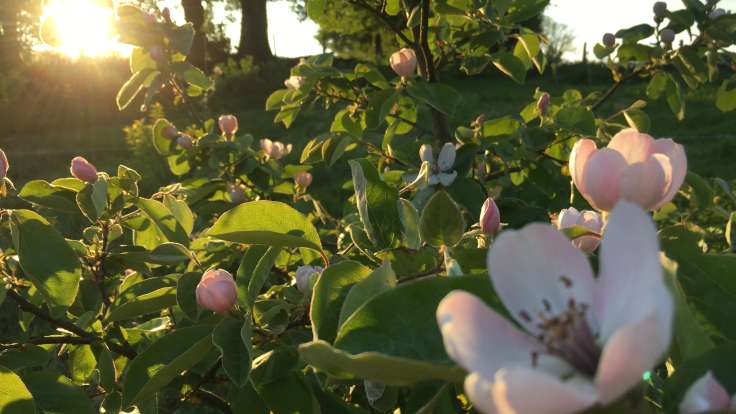
A quince tree, part of the canopy layer. Choosing other plants has been more challenging.
After listening to a @margaretroach podcast & reading a @DaveGoulson book, I realised that I don’t need to worry about plants!
I listened to the Margaret Roach podcast A Way to Garden, the episode entitled “Go ahead, we dare you: widen your plant palette”, with Andy Brand. A renowned plantsperson, he moved to a new job in a new area and was confronted with an array of new plants. In some ways, I can relate to that feeling as I’ve only been gardening in earnest for 3 years. And there is just so much to learn!!
Forest gardening is an inbetweeny sort of gardening, as it concentrates on the produce and wildlife side of things. In some respects, that makes it easier, as the plant palette for the tree canopy layer is relatively limited. It’s a functional and productive way to garden. I drew up a list of trees and harvests that I wanted, jiggled them around on the plan, bought them and planted them (sounds so easy in retrospect!).
Now that I’ve also finished the majority of the ground cover planting, I’m looking at the shrub layer, herbaceous perennials and what are sometimes called “system plants”. System plants don’t have a direct harvest but benefit the ecosystem of the garden. Examples include nitrogen fixers, mineral accumulators, pollinator friendly flowers and predator friendly plants.
This is where the fun really starts, because this is where you can play with the human-eye-pleasing shapes and colours. This is also where I feel most out of my depth – this is the realms of Traditional Gardening [sic]; thousands of varieties, a million combinations. I don’t really care what a quince tree looks like, it just has an innate beauty. But faced with a choice, and making aesthetic and visually oriented design decisions, that’s a whole new ball game.
Luckily, help is at hand. I’m in the middle of reading A Sting in the Tale by Dave Goulson (recommended by Steph). It is a right-rollicking and eye-opening read about the lives and loves of bumblebees. I am making mental notes about bee friendly plants, and then cross-referencing that with Martin Crawford’s Creating a Forest Garden. He has a whole appendix entitled “Plants to attract beneficial insects and bees”, with tables of data about flowering times and the like. I’m cross referencing that with the excellent Joy of Plants app to get the low down on dimensions, foliage and colours, and drawing up a shortlist of favourites.
Basically, I am following the insects for my choice of plants. I am even considering heather, it is that radical an approach. (I really don’t like heather but Erica carnea is a good source of nectar and pollen and is in flower January to April.)
I’ll write a follow-up on my choice of flowers for a forest garden with some cheery photos 🙂